
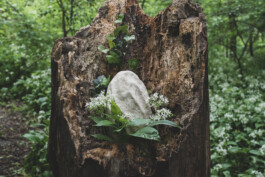
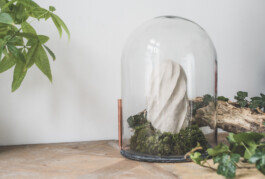
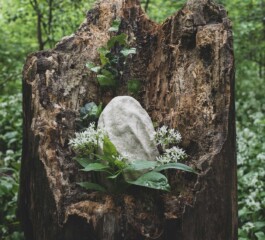
The urn is an alternative to previous burial methods and focuses not on death, but on life and the circle of life. Through the transformation of the urn, the deceased person remains part of the circle of life.
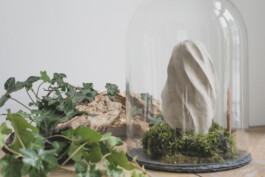
The urn transforms the ashes of the deceased person into mushrooms. Soon animals such as deer, birds, squirrels, snails and insects will come and absorb these mushrooms into their living organism. Thus, the deceased person becomes part of the whole forest section again.

Donna Haraway
Our urns start with the forest. Where life sprout, mushrooms compost the forest floor, trees soar into the skies and animals strive for the finest berries.
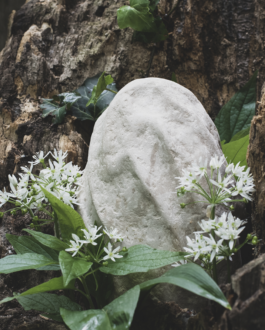
The raw material for the urn is sawdust waste from an Austrian carpentry workshop, which only works with solid wood and is committed to sustainability.
The urn's mycelium transforms the urn and its ashes into mushrooms. These can be eaten by the animals of the forest and thus the deceased person becomes part of the forest section..
The urn's mycelium transforms the urn and its ashes into mushrooms. These can be eaten by the animals of the forest and thus the deceased person becomes part of the forest section.

If you not only want to keep the memories alive, but also want to take part of the matter back into yourself and the community, you can harvest the mushrooms from the urn and pour tea together and enjoy it. This tea not only has a healing effect, but also serves as a mediator between the deceased person and the community. This can develop into an annual ritual to commemorate the deceased .


The urn is an alternative to previous burial methods and focuses not on death, but on life and the circle of life. Through the transformation of the urn, the deceased person remains part of the circle of life.
The urn transforms the ashes of the deceased person into mushrooms. Soon animals such as deer, birds, squirrels, snails and insects will come and absorb these mushrooms into their living organism. Thus, the deceased person becomes part of the whole forest section again.


Donna Haraway
Our urns start with the forest. Where life sprout, mushrooms compost the forest floor, trees soar into the skies and animals strive for the finest berries.

The raw material for the urn is sawdust waste from an Austrian carpentry workshop, which only works with solid wood and is committed to sustainability.
The urn's mycelium transforms the urn and its ashes into mushrooms. These can be eaten by the animals of the forest and thus the deceased person becomes part of the forest section..
The urn's mycelium transforms the urn and its ashes into mushrooms. These can be eaten by the animals of the forest and thus the deceased person becomes part of the forest section.
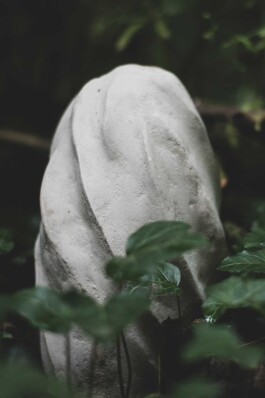
If you not only want to keep the memories alive, but also want to take part of the matter back into yourself and the community, you can harvest the mushrooms from the urn and pour tea together and enjoy it. This tea not only has a healing effect, but also serves as a mediator between the deceased person and the community. This can develop into an annual ritual to commemorate the deceased .
Contact
Supported by
let's celebrate
life in death
M +43 664 9968287
E hello@troost.at
W troost.at
I @troost
Privacy Policy
Imprint
Terms of Use
Dominik Einfalt
c/o CREATIVE CLUSTER
Viktor-Christ-Gasse 10
1050 Wien
Contact
let's celebrate
life in death
M +43 664 9968287
E hello@troost.at
W troost.at
I @troost
Privacy Policy
Imprint
Terms of Use
Dominik Einfalt
c/o CREATIVE CLUSTER
Viktor-Christ-Gasse 10
1050 Wien